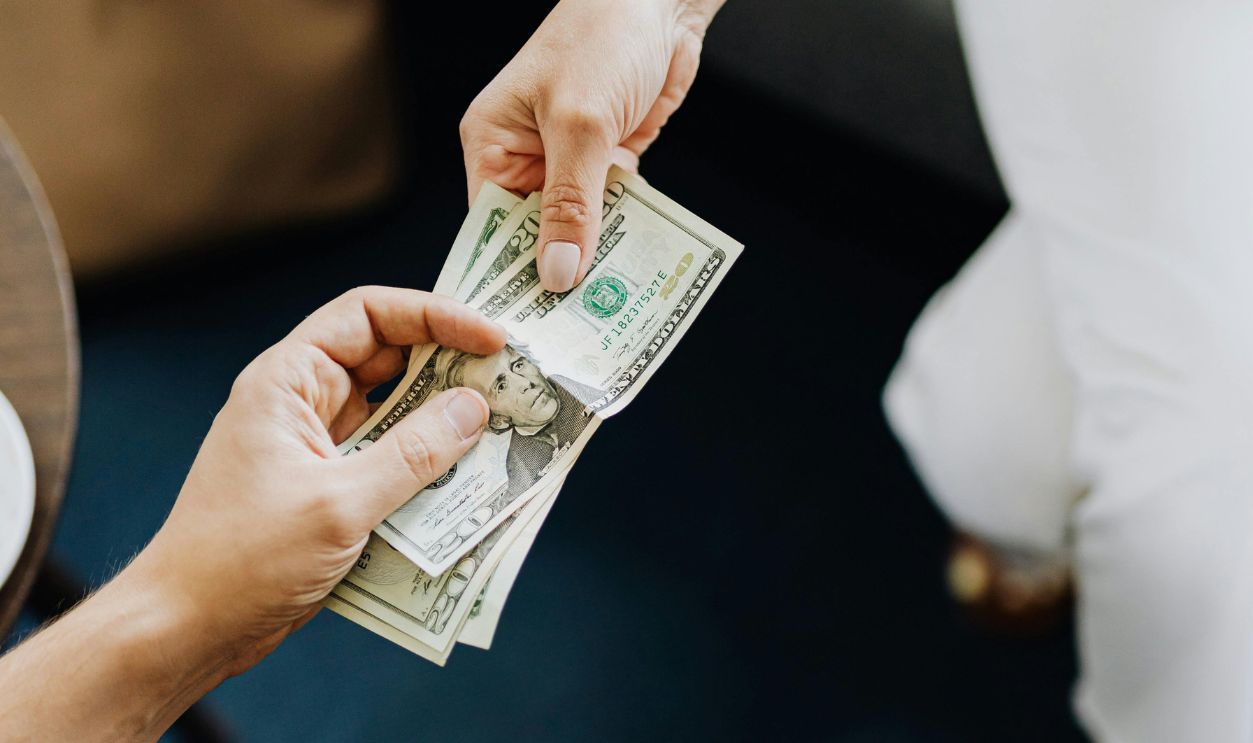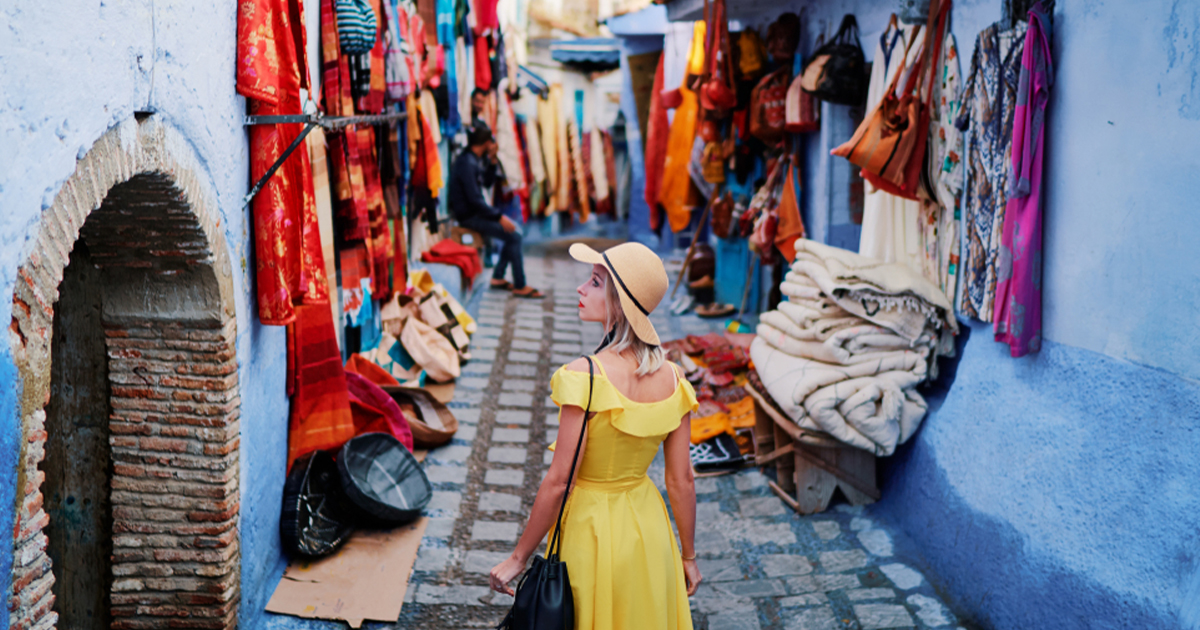Why America?
While Americans find some habits typical, other people scratch their heads, asking: Why? Here’s your guide to understanding these fascinating cultural differences that make the USA distinctively unique—it starts with free refills and ends with eateries closing early.

Free Refills Obsession
Americans’ love affair with ice-cold drinks often surprises visitors. Restaurants automatically fill glasses with ice and offer unlimited free refills on sodas. A Worldmetrics.org 2024 report lists that the average American gulps 44.7 gallons of soft drinks yearly. We purport this refill culture might be the cause.
 Watch how I refill my soda at the soda fountain at the Target café completely blind by Joy Ross
Watch how I refill my soda at the soda fountain at the Target café completely blind by Joy Ross
Tipping Culture
While tipping should be a voluntary action, in America, it has become practically mandatory going beyond 15%. The origin of tipping after the civil war was dark—business would use it as a way to avoid fair wages to the minorities so that the employees would rely on the tips.
 Only 63% of customers tip at sit down restaurants by Eyewitness News ABC7NY
Only 63% of customers tip at sit down restaurants by Eyewitness News ABC7NY
Prescription Drug Advertising
Only two countries globally allow direct-to-consumer advertising (DTCA) of prescription drugs: the USA and New Zealand. Americans see an average of nine drug commercials per day, leading to $6.6 billion spent annually on prescription drug advertising. These adverts may influence some patient’s choices when they go in for doctor’s visits.
 Top 10 Worst Anti-Drug Commercials by WatchMojo.com
Top 10 Worst Anti-Drug Commercials by WatchMojo.com
Portion Sizes
When you step into an American restaurant (except fine dining), expect huge portions and this shocks foreign visitors. A typical US restaurant meal contains 1,200-1,500 calories—nearly an entire day’s recommended intake. The “small” soft drink at US movie theaters equals a “large” in many European countries.
Drive-Through Everything
Drive-through banks, pharmacies, wedding chapels, you name it, America has it. Fast service delivery has turned virtually everything into a drive-through experience. Drive-through banks started in the 1940s, and now most US banks offer this service. “Why walk when you can drive?” appears to be the slogan.
 Bank Drive Thru Tube by The Nguyen Family
Bank Drive Thru Tube by The Nguyen Family
Sales Tax Surprise
Unlike most countries where the price tag includes tax, American stores add sales tax at checkout. Additionally, the tax rates vary wildly between states and even cities—from 0% in Oregon to 9.55% in Tennessee. First-time visitors often get caught off guard when their $10 purchase suddenly costs $10.95.
Public Bathroom Gaps
Those awkward spaces between bathroom stall doors and walls puzzle international travelers. These gaps, typically half an inch wide, exist due to American building codes enforced in 1990. These focus on easy maintenance and emergency access, especially for people with disabilities and kids stuck in these spaces.
 State Park Women's Restroom, OCC Plumbing & Restorations
State Park Women's Restroom, OCC Plumbing & Restorations
Temperature in Fahrenheit
People in the US remain one of only three countries still using Fahrenheit (alongside Bahamas and Cayman Islands). When Americans say it’s 70 degrees outside, visitors expecting Celsius might grab their winter coats, only to find perfect t-shirt weather.
24/7 Shopping Culture
Want some groceries at 3 AM? No problem! While there was a shift of retailers reducing their operating hours to close at 11 PM, a significant number still operate 24/7; some Walmarts and 7-Eleven’s. This convenience-first mindset baffles visitors from countries where shops close early.
Massive Food Waste
Americans toss approximately 30% to 40% of their food—that’s 219 pounds for each person every year. The biggest cause of waste is food spoilage. Restaurant doggy bags (take-out containers) are perfectly normal here. “Take it home or throw it away” is the prevailing attitude and some people resort to throwing it at home.
 Tossed Out: Food Waste in America by Nebraska Public Media
Tossed Out: Food Waste in America by Nebraska Public Media
Air Conditioning Everywhere
The US consumes more energy for air conditioning than all other countries combined. In 2020, the number of households with AC stood at 88%. Now imagine today! Indoor temperatures often hover around 70°F (21°C), causing visitors to pack sweaters for summer! Some office workers even keep blankets at their desks.
Friendly Small Talk
“How are you?” “What’s up?” or “What’s going on?” aren’t actually questions in America; they are greetings. Cashiers, strangers, and servers all engage in casual conversation. While some cultures find this superficial, Americans consider it polite. Possible answers include “Nothing much” and “Same old, same old”.
Endless Free Water
Americans consume more tap water than Europeans, and the good news is that the US always takes stringent measures to ensure the water is safe for drinking. That’s why you’ll find people indulging in drinking fountains at schools, parks, and other public spaces without worry.
Direct Communication Style
While Japanese visitors might find it rude, Arabic and African guests might find it disrespectful, and British folks too forward, Americans pride themselves on “telling it like it is,” no matter the age bracket. Most cultures have certain hierarchical norms that dictate how you greet and talk to your elders.
Cheese on Everything
In 2022, the yearly statistics on cheese usage in the US was about 42 pounds per person, and that is probably because Americans use it on everything sprayed, squeezed, or melted. People actually take less milk than cheese here. Cheese in a can? That’s uniquely American, with millions sold yearly.
Sugar in Unexpected Places
Almost all American recipes you find online for baking and even sometimes grilling entail sugar. American bread usually contains more sugar than European loaves. Even “healthy” foods pack surprising amounts of sweetness. For example, a typical American fruit yogurt contains 23 to 29 grams of added sugar.
Personal Space Bubbles
If you walk or stand too close to an American, you could just be inviting some drama. This is because a typical American prefers living in their bubble starting at 18-inches for people they know and 4 to 8 feet for strangers. This invisible bubble extends to seating arrangements too.
Flags Everywhere
While many nations reserve flags for government buildings, Americans display them everywhere—homes, cars, clothing, offices, as lapels, and even toothpicks. A 2007 Pew Research Center article revealed that 62% of Americans attest to flying their flags. America actually ranks number one for flying their flag the most.
To-Go Coffee Culture
It is estimated that a person here consumes three cups of coffee daily, thanks to the to-go coffee culture. This culture has people constantly clutching coffee cups during meetings, shopping, or walking, and it always surprises visitors from traditional café cultures like Italy or France.
College Sports Mania
The passion for college sports, particularly American football, stuns foreign visitors, who can’t fathom why amateur athletics draw larger crowds than many professional leagues. The Michigan Stadium, also known as “The Big House,” houses 107,601 college sports fans—bigger than most European soccer venues.
Healthcare Costs
Visitors from countries with universal healthcare gasp at American medical bills. A simple ambulance ride averages $2,125, and this varies depending on the situation—emergencies cost more. Woe unto you when you don’t have insurance to offset these bills. Sometimes, people actually prefer taking an Uber to the ER, which is risky.
Yellow School Buses
Those iconic yellow buses—about 490,000 strong—transport 20 million+ students daily. The specific shade, “National School Bus Glossy Yellow,” was chosen in 1939 because it’s the most visible color in dawn and dusk lighting. Some countries use other colors, while the majority lean towards yellow and orange.
Free Public Bathrooms
While Europeans often pay to use public restrooms, Americans consider this concept shocking. The “pay toilet” movement started by a 19-year old Ira Gessel banned payments. She once said, “You can have a fifty-dollar bill, but if you don’t have a dime, that metal box is between you and relief.”
 Public Restrooms Men's Restroom by OCC Plumbing & Restorations
Public Restrooms Men's Restroom by OCC Plumbing & Restorations
Credit Card Signing
While most countries switched to chip-and-PIN years ago, Americans still frequently sign up for credit card purchases. This puzzles international visitors, especially since signatures aren’t even checked for authenticity anymore. Most find it a bit time-wasting and unnecessary, especially since most card providers dropped it as a requirement in 2018.
Advertising Breaks
Imagine you are watching your favorite drama only to be interrupted with a TV show break every few minutes. Well, in America, primetime adverts average 12 to 17 minutes per hour. International viewers find this jarring, Europeans TV regulators limit commercial breaks to 12 min hourly.
 USA Network Commercial Break (April 23rd, 2024) by Tatiana Cortez
USA Network Commercial Break (April 23rd, 2024) by Tatiana Cortez
Customizable Everything
“Hold the pickle, add extra cheese, sauce on the side”—this is the norm in almost all American orders on food and sometimes other consumables. This desire to modify menu items bewilders visitors from cultures where changing dishes is considered insulting. You take it as you find it.
Gigantic Vehicles
In most American parking lots, it’s common to find monster trucks. European visitors marvel at this American culture on massive vehicles, as the best-selling Ford F-150 is two feet longer than most European family cars. Parking spaces in the US reflect this difference—an average of 9 feet wide compared to Europe’s 7.5 feet.
Birthday Parties for Adults
You’d think that once you hit “adulthood,” no more parties. Well, not in the US where you are celebrated until….always! While many cultures reserve birthday celebrations for children, Americans throw elaborate parties into adulthood. The average American could spend hundreds to thousands on their birthday celebration, with the expectation of gifts.
The Pledge of Allegiance
Students reciting a daily pledge strikes many foreigners as unusual. This 31-word oath, written in 1892, gets repeated over and over during a student’s K-12 education. In the US, 47 states have this as a requirement while only a handful of countries practice similar daily pledges.
 The Pledge of Allegiance For All Kids! by Kid Explorer
The Pledge of Allegiance For All Kids! by Kid Explorer
Paper Money
Did you know that all US dollar bills are the same size and color; a concept that baffles visitors from countries with differently sized, multicolored notes. This uniformity causes visually impaired Americans to sometimes overpay because it becomes harder to distinguish between a dollar and a hundred dollar note.
 Photo By: Kaboompics.com, Pexels
Photo By: Kaboompics.com, Pexels
Halloween Enthusiasm
The scale of Halloween celebrations amazes foreign visitors. In 2024, the National Retail Federation estimated the spending to reach $11.6 billion. The reason? Costumes, decorations, themed parties, and not only that; A typical American household hands out mostly candy and chocolate, giving each trick-or-treater an average of three.
 Photo By: Kaboompics.com, Pexels
Photo By: Kaboompics.com, Pexels
Sports During School
The integration of athletics into education surprises many visitors. It’s estimated that about 8 million high schoolers in the US enroll in sports programs, while most countries separate academics and athletics entirely. Here, high school football coaches often earn more than teachers, sometimes even clocking in millions.
Abundance of Choice
It’s only in the US (and a few other nations) that you will find an entire aisle of the same thing in multiple branding. The average American supermarket stocks more items in the same category than what European markets average. It spans across foods, cosmetics, and other consumables.
Drinking Age Complexity
While most countries set drinking ages between 16-18, America’s strict 21 law creates unique social dynamics. It doesn’t make sense that 19-year-olds can serve drinks but can’t taste them, join the military, but can’t celebrate with champagne. This age restriction is puzzling, especially when other adult rights are granted at 18.
Loud Emergency Vehicles
American ambulances hit 120 decibels—significantly louder than European counterparts like Brussels who have it set at 100 decibels during the day and lower at night. The distinctive “wail” siren pattern, used nowhere else globally, can be heard from 1.5 miles away. First-time visitors often jump at these startling sounds.
Prescription Pick-Up Time
The average American who is picking up their prescription might have to wait a while to pick up the prescribed medication because a few details have to be verified. Before walking away, the pharmacist has to confirm your identity, insurance, authorizations, and other checks.
Food Delivery Culture
The numbers on food delivery in the US are crazy, with Uber Eats taking the lead. Their 2023 sales hit a record high at $12.1 billion. The concept of paying extra in delivery fees plus tip meals baffles many international visitors, yet one in four Americans orders delivery at least once a month.
Gym Culture
It is estimated that three in five Americans today are gym goers with an active gym subscription. The US has more gyms per capita than any other country. What surprises visitors isn’t just the quantity but the 24/7 access and the social aspect: some use gyms as networking spaces.
Free Soap and Shampoo
American hotels provide complimentary toiletries daily—a practice that amazes visitors from countries where this is considered wasteful because guests leave soaps opened and used only once. While some European hotels still offer them, you should not bet on it. Carry yours to ensure you always take a clean shower.
Garage Door Obsession
It’s a weird thing that Americans spend on that international residents wonder why. According to HomeAdvisor, a homeowner would not spend less than $1,200 on the installation and labor of a garage door. Americans also use their garage door as their primary entrance—a concept foreign to most international visitors.
Tailgating Tradition
The pre-game parking lot party phenomenon puzzles international sports fans. This tradition started way back in 1869 on a football game between Princeton and Rutgers in New Jersey. From then on, Americans usually meet up early for drinks and food before the games commence.
 Celebrate this football season with the ultimate tailgate party | Celebration Season by TODAY Food
Celebrate this football season with the ultimate tailgate party | Celebration Season by TODAY Food
Giant Refrigerators
Many usually ask; “What do you put into that huge fridge?” quite often when they get to see the gigantic fridges Americans are fond of. American fridges are typically bigger, nearly double the size of European models. This size difference reflects shopping habits: Americans grocery shop more times weekly, while Europeans go less.
Casual Business Attire
Silicon Valley’s influence has created a uniquely American phenomenon where CEOs wear hoodies, t-shirts, and jeans to board meetings. This casual approach shocks visitors from countries with strict business dress codes where they still wear suits and official attire to offices and other workspaces.
Early Restaurant Closing
The final thing foreigners find perplexing is just how early American restaurants close—by 10 PM. Another shocker is the early dining times. This surprises visitors from Spain or Greece, where dinner often starts at 9 or 10 PM. It's only a few US restaurants that still serve food past midnight.







































